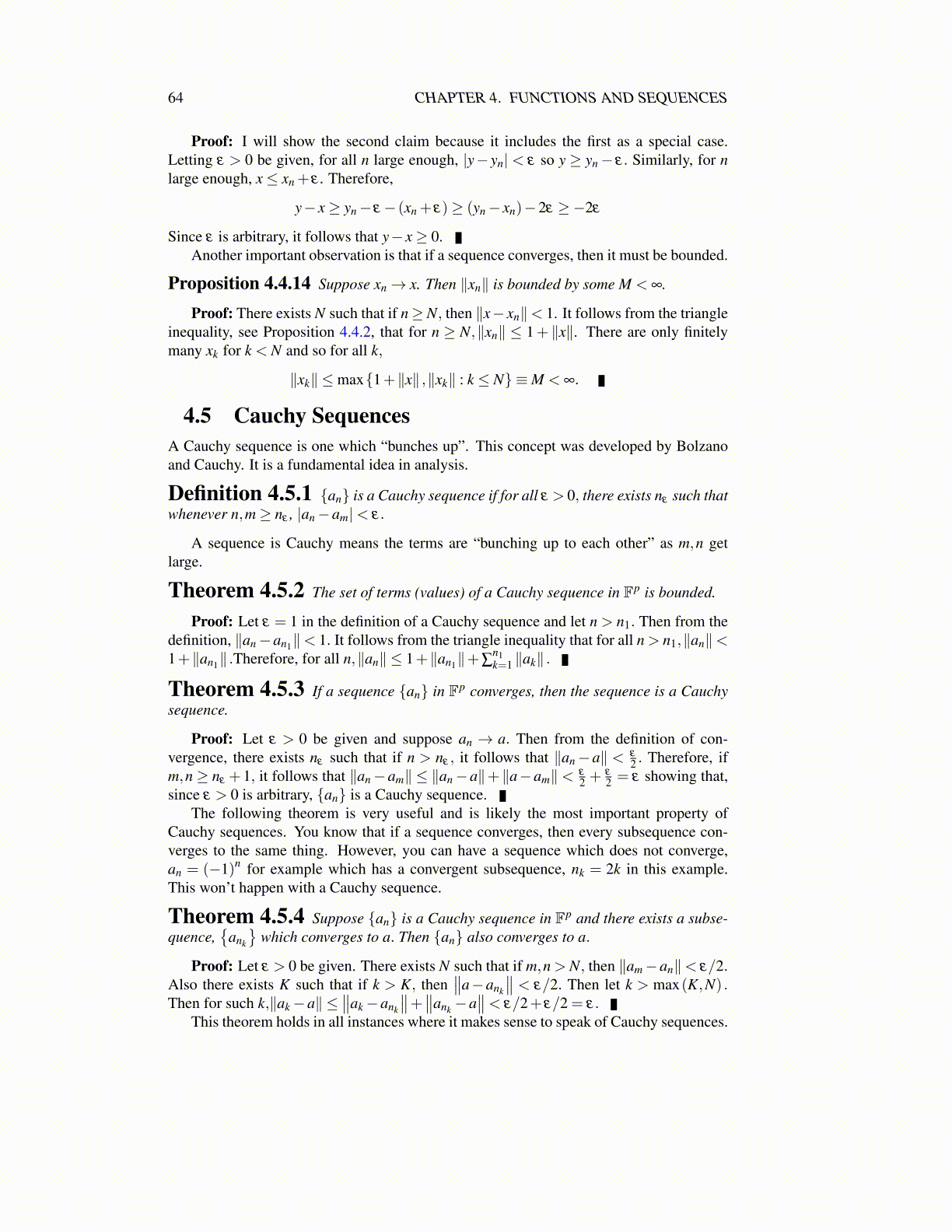
64 CHAPTER 4. FUNCTIONS AND SEQUENCES
4.7 Exercises1. Find limn→∞
n3n+4 .
2. Find limn→∞3n4+7n+1000
n4+1 .
3. Find limn→∞2n+7(5n)4n+2(5n) .
4. Find limn→∞
√(n2 +6n)−n. Hint: Multiply and divide by
√(n2 +6n)+n.
5. Find limn→∞ ∑nk=1
110k .
6. Suppose {xn + iyn} is a sequence of complex numbers which converges to the com-plex number x+ iy. Show this happens if and only if xn→ x and yn→ y.
7. For |r|< 1, find limn→∞ ∑nk=0 rk. Hint: First show ∑
nk=0 rk = rn+1
r−1 −1
r−1 . Then recallTheorem 4.4.11.
8. Using the binomial theorem prove that for all n ∈ N,(1+
1n
)n
≤(
1+1
n+1
)n+1
.
Hint: Show first that(n
k
)= n·(n−1)···(n−k+1)
k! . By the binomial theorem,
(1+
1n
)n
=n
∑k=0
(nk
)(1n
)k
=n
∑k=0
k factors︷ ︸︸ ︷n · (n−1) · · ·(n− k+1)
k!nk .
Now consider the term n·(n−1)···(n−k+1)k!nk and note that a similar term occurs in the
binomial expansion for(1+ 1
n+1
)n+1except you replace n with n+1 whereever this
occurs. Argue the term got bigger and then note that in the binomial expansion for(1+ 1
n+1
)n+1, there are more terms.
9. Prove by induction that for all k ≥ 4, 2k ≤ k!
10. Use the Problems 21 and 8 to verify for all n ∈ N,(1+ 1
n
)n ≤ 3.
11. Prove limn→∞
(1+ 1
n
)nexists and equals a number less than 3.
12. Using Problem 10, prove nn+1 ≥ (n+1)n for all integers, n≥ 3.
13. Find limn→∞ nsinn if it exists. If it does not exist, explain why it does not.
14. Recall the axiom of completeness states that a set which is bounded above has a leastupper bound and a set which is bounded below has a greatest lower bound. Show thata monotone decreasing sequence which is bounded below converges to its greatestlower bound. Hint: Let a denote the greatest lower bound and recall that because ofthis, it follows that for all ε > 0 there exist points of {an} in [a,a+ ε] .